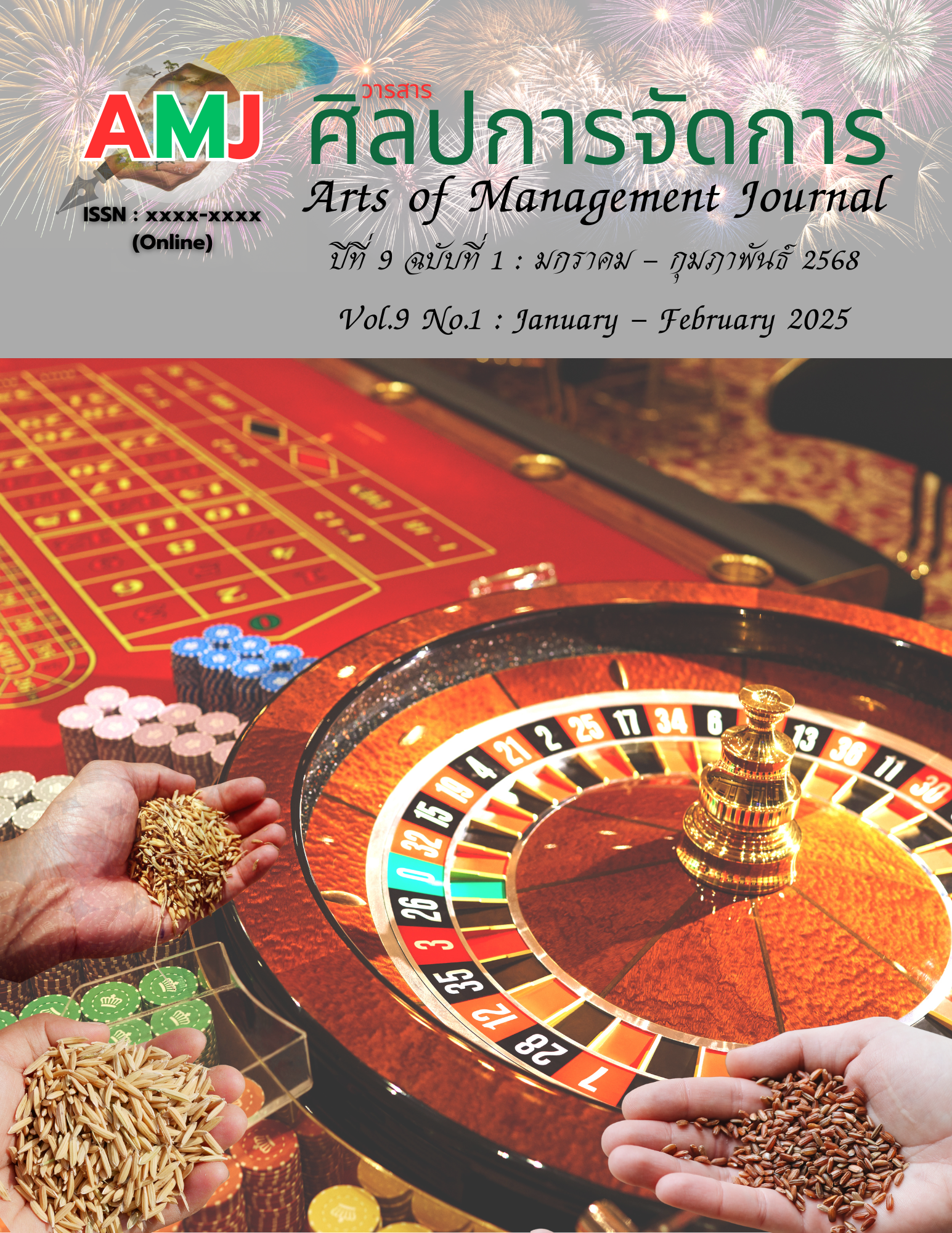Development of Competency-Based Curriculum to Central Thai House Construction in Vocational Certificate Level
Main Article Content
Abstract
This objective of the research were to 1) study the competency of Central Thai House Construction in Vocational Certificate Level and 2) develop a competency-based curriculum for building Thai houses in the Central region at the vocational certificate level. The research is divided 2 phases. In phase 1, there are sub-phases as follows: 1.1) studies the feasibility of implementing the competency-based curriculum by using a questionnaire to school administrators and teachers. Data is analyzed using statistics, percentage, median, and standard deviation. 1.2) studies the competency by using the Delphi method, 17 people, which is a purposive selection. Data is analyzed using statistics, median, and interquartile range. In phase 2 develops a competency-based curriculum for building Thai houses in the Central region at the vocational certificate level by using group discussions with 7 experts, which is a purposive selection, and data is analyzed using content analysis.
The results of Development of Competency-Based Curriculum to Central Thai House Construction in Vocational Certificate Level was included in the category of architectural technicians. Competencies were divided into 3 areas: knowledge 14 competencies; skills 12 competencies and attitude 9 competencies. From the group discussions, a short-term curriculum was obtained, consisting of 3 modules as follows: 1) Design and drafting of Central Thai houses 2) Production of workpieces, materials, and methods for constructing Central Thai houses 3) Building equipment, building maintenance, laws, and occupational health in Central Thai houses, which can be used in the curriculum at the vocational certificate level.
Article Details

This work is licensed under a Creative Commons Attribution-NonCommercial-NoDerivatives 4.0 International License.
Views and opinions appearing in articles in the Journal of Arts of Management It is the responsibility of the author of the article. and does not constitute the view and responsibility of the editorial team I agree that the article is copyright of the Arts and Management Journal.
References
Bloom, B. S., Madaus, G. F., & Hastings, J. T. (1971). Handbook on formative and summative evaluation of student learning. McGraw-Hill.
Boyatzis. R.E. (1982). Organization behavioral. (7th ed.). McGraw-Hill.
Bryant, J., & Poustie, K. (2001). Competencies needed by public library staff. Bertelsmann Foundation.
Chandrakasem Rajabhat University. (2023). Manual for preparing the curriculum of module courses and non-degree courses. Office of Academic Promotion and Registration.
Chitranukroh, J. (2007). The analysis of essential factors in traditional Thai house technology: Central Thailand[Doctoral dissertation, Chulalongkorn University].
Council of Architects. (2022). Architectural professional practice control. https://www.act.or.th/th/home/post.php?type=1&p=29
Jaijongrak, R. (2000). Traditional Thai house (3rd ed.). Thammasat University.
McClelland, D. C. (1973). Testing for competence rather than intelligence. American Psychologist.
Meesil, N. (2016). Delphi research: avoiding misconceptions. Veridian E-Journal, Silpakorn University, 9(1), 1256-1267. https://he02.tci-thaijo.org/index.php/Veridian-E-Journal/article/view/61679
Ngamman, R. (2019, April 27, 2019). Suwannaram Worawihan Temple Hall. Thai Post.
Office of Vocational Education and Professional Standards, Office of the Vocational Education Commission, Ministry of Education, Thailand. (2019). Vocational education management. https://bsq.vec.go.th/Portals/9/document/Course%20criteria/1.pdf
Office of the Vocational Education Commission, Ministry of Education, Thailand. (2024). Vocational certificate curriculum, B.E. 2567 (2024). https://bsq.vec.go.th/
Phirom, S. (1982). Central Thai house. Teachers’ Council of Thailand.
Phramaha Udorn Uttaro (Makdee)., Phrakhrusrisutamniwit (Sukachoto Sukchaem)., Phrakhrusiriphurinithat (Thitasaggo Ditsawan)., & Phrakhrubaidika Monthon Khamago (Chutosri). (2022). Guidelines for the development of competency-based curriculum and
student teaching management. Journal of Educational Review Faculty of Education in MCU, 9(1), 438-451. https://so02.tci-thaijo.org/index.php/EDMCU/article/view/255074
Phromma, C. et al. (2006). The model of community enterprise network management for sustainable self-reliance. Office of the Higher Education Commission.
Saylor, J.G., Alexander, W.M., & Lewis, A.J. (1981). Curriculum planning for better teaching and learning. Holt, Rinehart and Winston.
Silpcharu, T. (2014). Research and statistical data analysis with SPSS and AMOS (15th ed.). S.R. Printing Mass Production.
Siwasariyanon, C. (2001). Basic Thai architecture for technicians (13th ed.). Technology Promotion Association (Thai-Japan).
Spencer, L. M. (1993). Competence at work models for superior performance. Wiley.
Suwannakiri, P. (1982). The sapling house (4th ed.). Aksorn Charoentat.
TESDA. (2006). The Philippine qualification framework. Republic of the Philippines.
Thichinphong, A. (2004). Thai style decoration (7th ed.). Baanlaesuan.
Thonsongaroch, P. (2012). The form and components of traditional Thai houses in the central region that have changed in the present[Doctoral dissertation, Kasetsart University].
Wongwanich, S. (2015). Needs assessment research. Chulalongkorn University.


